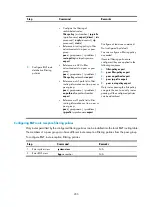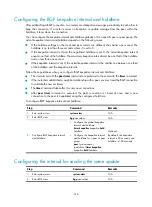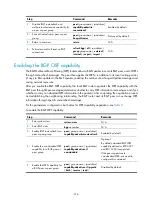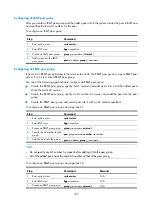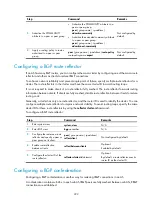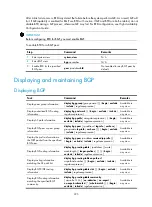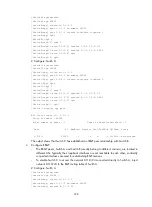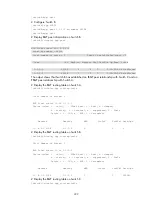
218
Step Command
Remarks
2.
Enter BGP view or
BGP-VPN view.
•
Enter BGP view:
bgp
as-number
•
Enter BGP-VPN instance view:
a.
bgp
as-number
b.
ipv4-family vpn-instance
vpn-instance-name
Use either approach.
3.
Set the DSCP value
for the BGP packets
sent to the specified
BGP peer or peer
group.
peer
{
group-name
|
ip-address
}
dscp
dscp-value
Optional.
By default, the DSCP value in BGP
packets is 48.
Enabling quick EBGP session reestablishment
If the router receives no keepalive messages from a BGP peer within the holdtime, it disconnects from the
peer.
With quick EBGP connection reestablishment enabled, the router will reestablish a session to the EBGP
peer immediately when the link to a directly connected EBGP peer is down.
To enable quick EBGP session reestablishment:
Step Command
Remarks
1.
Enter system view.
system-view
N/A
2.
Enter BGP view.
bgp
as-number
N/A
3.
Enable quick EBGP session
reestablishment.
ebgp-interface-sensitive
Optional.
Not enabled by default.
Enabling MD5 authentication for TCP connections
BGP employs TCP as the transport protocol. To increase security, configure BGP to perform MD5
authentication when establishing a TCP connection. The two parties must have the same password
configured to establish TCP connections.
BGP MD5 authentication is not for BGP packets, but for TCP connections. If the authentication fails, no
TCP connection can be established.
To enable MD5 authentication for TCP connections:
Step Command
Remarks
1.
Enter system view.
system-view
N/A
2.
Enter BGP view.
bgp
as-number
N/A
3.
Enable MD5 authentication when
establishing a TCP connection to the
peer or peer group.
peer
{
group-name
|
ip-address
}
password
{
cipher
|
simple
}
password
Optional.
Not enabled by default.


